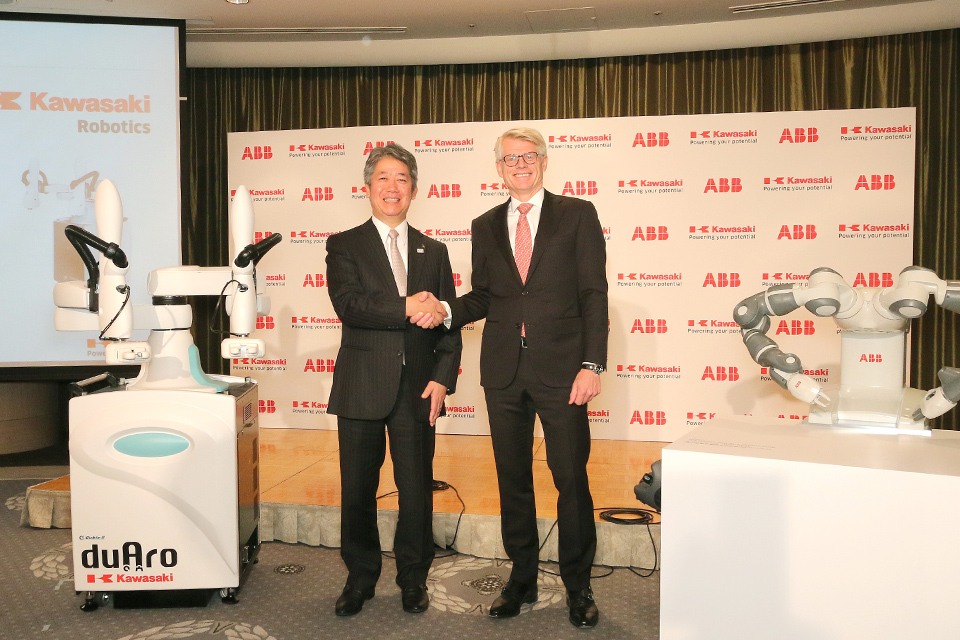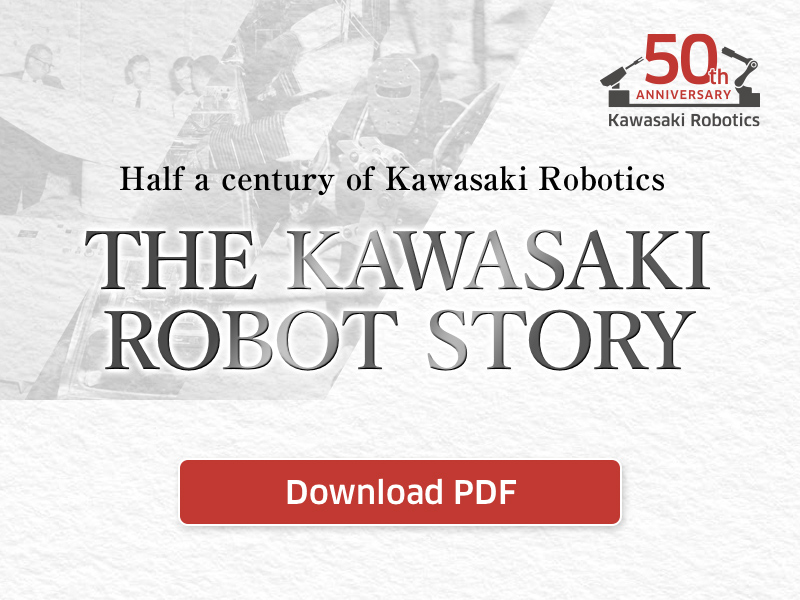Closer and Wider:
Broadening the Realm of Robotic Applications
As the world set foot into the 2010s, the declining birthrate and aging population became a serious social issue in Japan and a number of other countries in the world.
This issue has revealed many other significant concerns as well including labor shortages,
loss of technical skills due to the retirement of experienced workers and increasing medical expenses.
Under these circumstances, the use of robots has been viewed as an answer in addressing these social problems and progress
is being made in studying how to broaden robotic applications by taking robots outside of manufacturing sites and harmonizing them into people’s everyday lives.
Also, with the integration of ever-evolving technologies such as artificial intelligence (AI),
the Internet of Things (IoT) and communication networks, the potential of robotics is opening up even more.
Venturing into Healthcare and Establishing the Joint Venture, Medicaroid
Taking into consideration growing expectations for the use of robotics to address social issues in healthcare, in 2013 Kawasaki established Medicaroid Corporation in a joint investment with Sysmex Corporation, a world-leading medical examination equipment and reagent manufacturer for the clinical laboratory testing of blood and urine, with a comprehensive range of testing and diagnostic technologies and a wide network in the medical sector. In 2017, Medicaroid launched its first product, the SOT-100 Vercia, a robotic operating table with the ability to move a patient around a large area. The company plans to launch surgical assistance robots in 2019 in Japan and then expand its business later overseas.
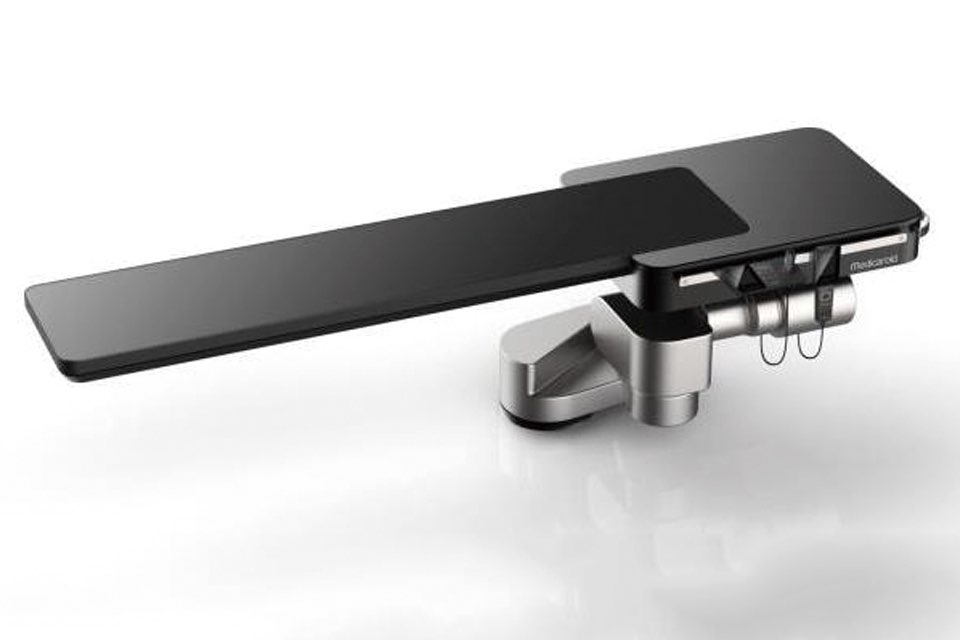
Robots Collaborating with Humans: “duAro”, the Dual-Arm SCARA Robot
As the Japanese labor force is predicted to decrease at a rate of 640,000 people a year, “collaborative robots” capable of co-existing and collaborating with humans in the same workspace are drawing attention. In 2015, Kawasaki launched the “duAro”, a robot developed based on the concept that it would “co-exist with humans, be easy to install and teach, and be dual-armed”. In addition to making robot implementation a much more accessible option for factories with ever-changing multi-product, small-lot-sized production lines, a lot of consideration went into making it easy to operate even for users unfamiliar with handling robots as well, offering the ability for users to manipulate and teach intuitively through the use of tablet devices. The launch of the duAro has widened the range of robotic applications in small factories and shops.
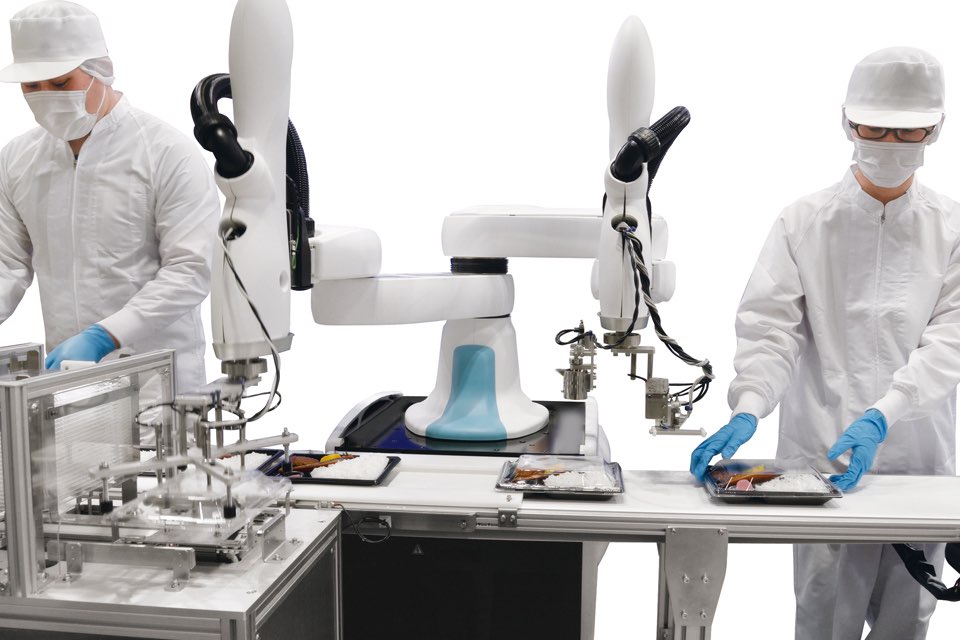
Making the most of its two arms, duAro is hard at work in various operations.
Learning and Reproducing Expert Skills: “Successor”, the Remote Collaboration Robot System
While it is anticipated that robots will play a role in solving social problems, on a global scale, the introduction of robots has not progressed. Even in the manufacturing industry, there are approximately 300 robots operating per 10,000 employees in the manufacturing industry in Japan, and approximately 600 units in Korea where robotization has advanced the most in the world.* The circumstances surrounding this is that there are many fields where work requires human senses and the techniques of expert workers, or the costs and time involved with implementing robots is disproportionate, making robotization currently difficult. Kawasaki’s proposal and challenge towards such fields, came in the form of a new robot system, the “Successor”, which was launched in November 2017. This system, by means of utilizing the remote collaboration technology Kawasaki has fostered over the years and AI, which continues to develop in recent years, allows robots to learn the movements of workers and reproduce them by automatically converting what it learned into a program and then automating the operation, or skillfully handle tasks that have variances every time and traditionally require fine adjustment by experienced human workers. With the Successor, Kawasaki will confront social challenges caused by the aging population and work on making robotization possible in fields once deemed very challenging to robotize.
- *International Federation of Robots (IFR), “World Robotics 2017”
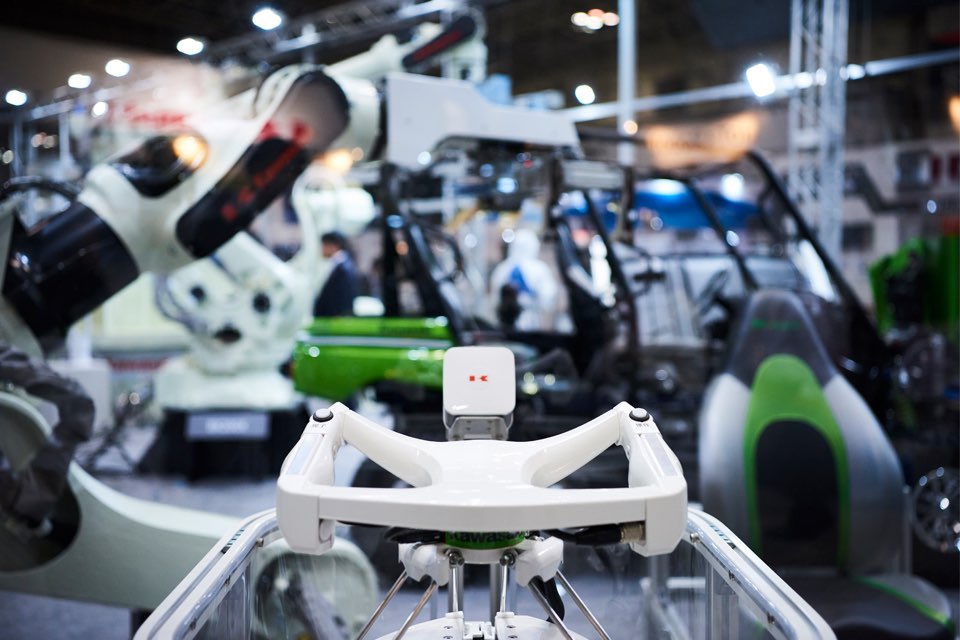
The Successor for the painting application was exhibited at the PaintExpo held in Germany in 2018.
Developing a Humanoid Robot: An Industrial-Academic Collaboration Nurturing Infinite Possibilities
The Great East Japan Earthquake and subsequent nuclear power plant accident in March 2011, the 2014 Mount Ontake eruption—ongoing research and development of humanoid robots has been carried out anticipating the use of robots in sites of such natural disasters. However, the fragility of robots has always been a challenge. Even researchers exploring humanoid robots at the University of Tokyo’s Jouhou System Kougaku Laboratory have been facing the same problem. So, Kawasaki teamed up with the University of Tokyo in a co-development effort—a collaboration between industry and academia—and leveraging its experience gained through manufacturing indestructible industrial robots, began development on a practical, durable and robust robot body that exhibits the same range of motion a human body has. Kawasaki hopes this robot will be used as a platform for researchers to develop on, and by doing so, it will create new markets and speed up the research and development of humanoid robots more than ever before. Achievements of this project were partially announced and Kawasaki’s humanoid robot made its debut at the International Robot Exhibition 2017.
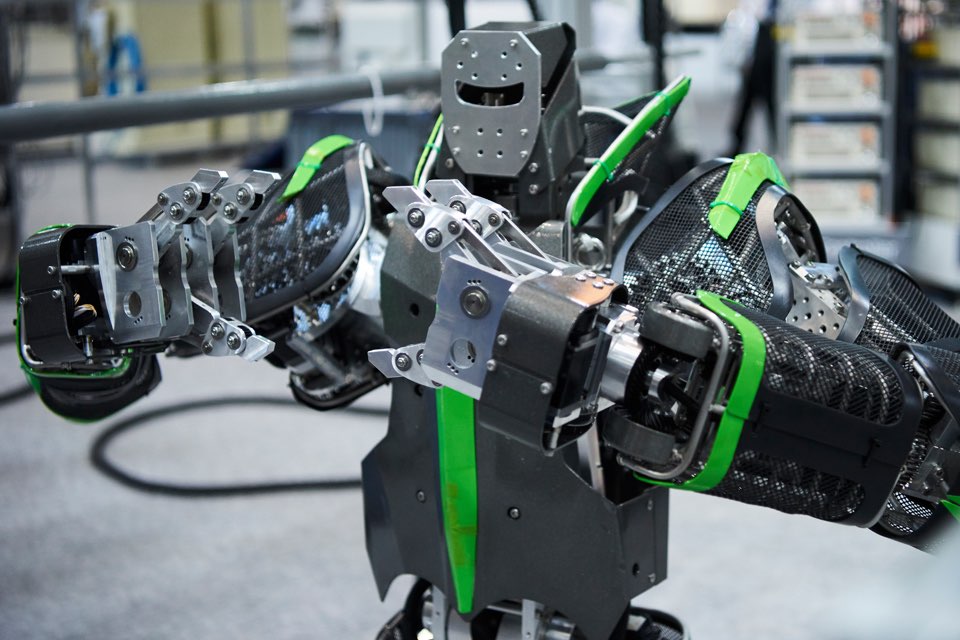
Alliances with Players from Various Fields Shaping the Future of Open Platform
In 2018, the robot business of Kawasaki Heavy Industries marks 50 years since its establishment in 1968, and in this milestone year Kawasaki is entering a new phase.
Kawasaki Robotics is redefining itself—a transformation from being just an industrial robot manufacturer to a fully integrated robot manufacturer. With the mission as a robotic solution provider, Kawasaki will continue on its quest to give back to society all the knowledge and experience acquired so far on this journey and to develop robots which realize the needs of people and society.
